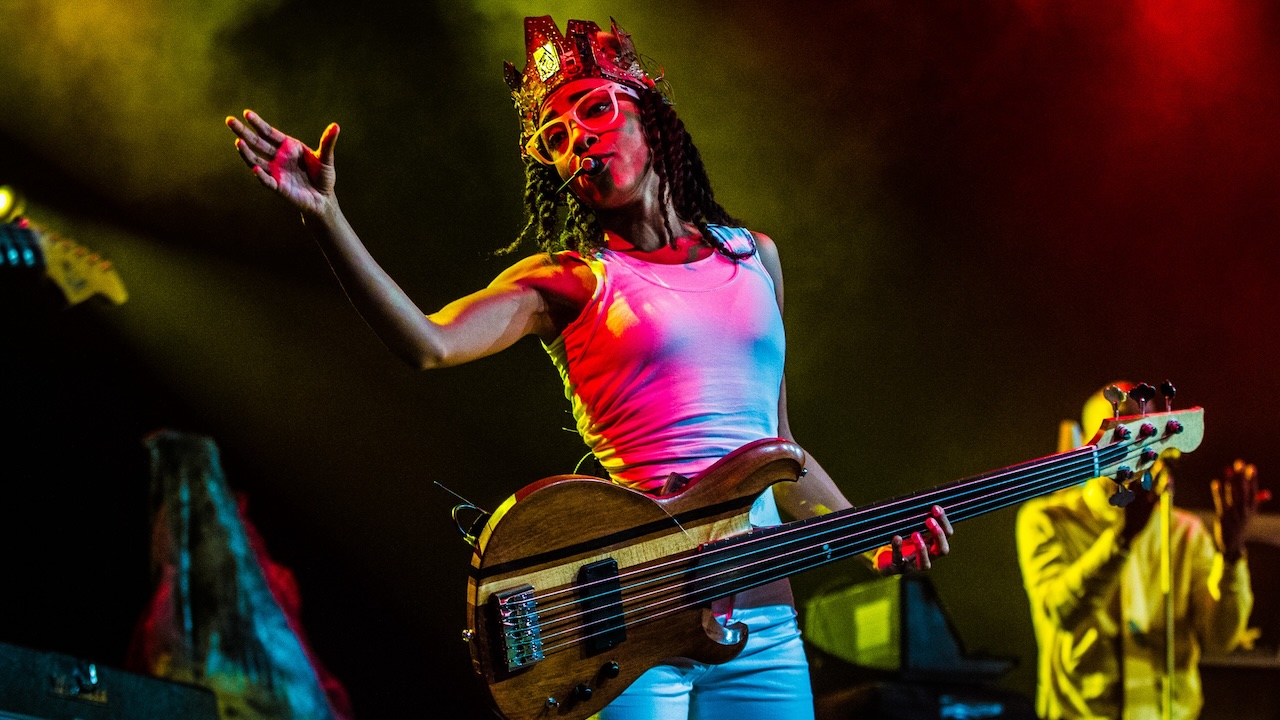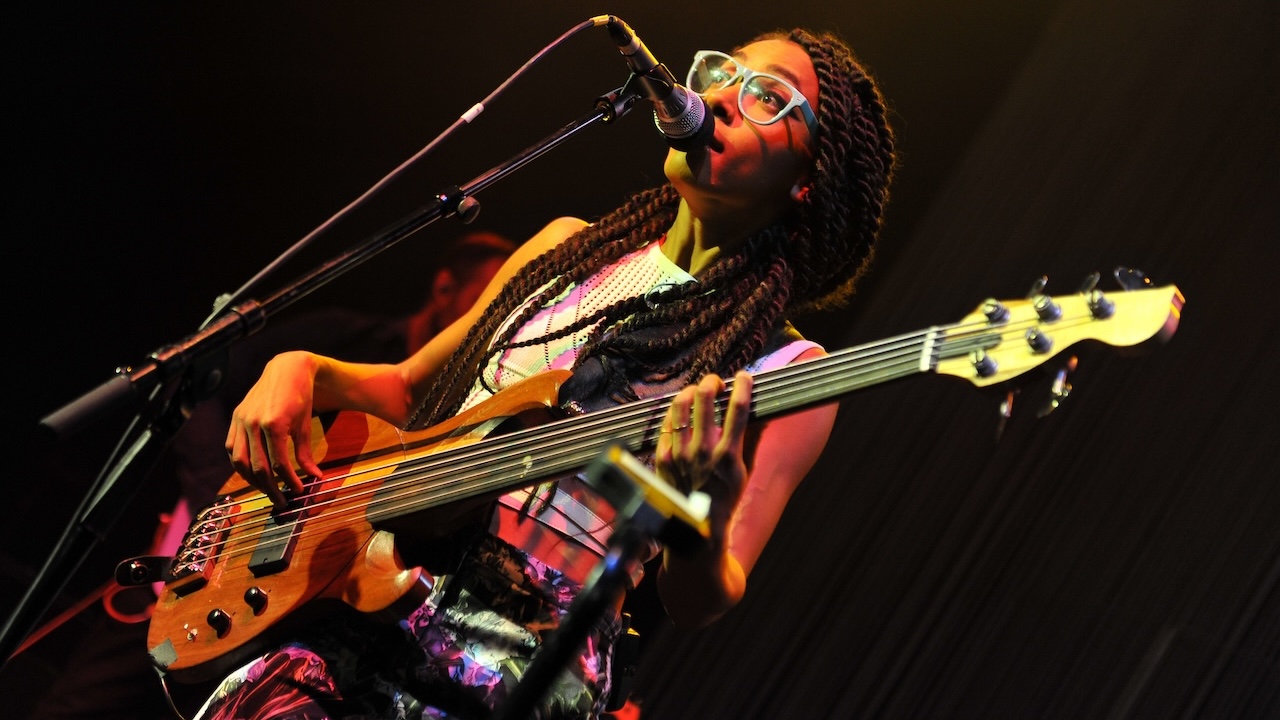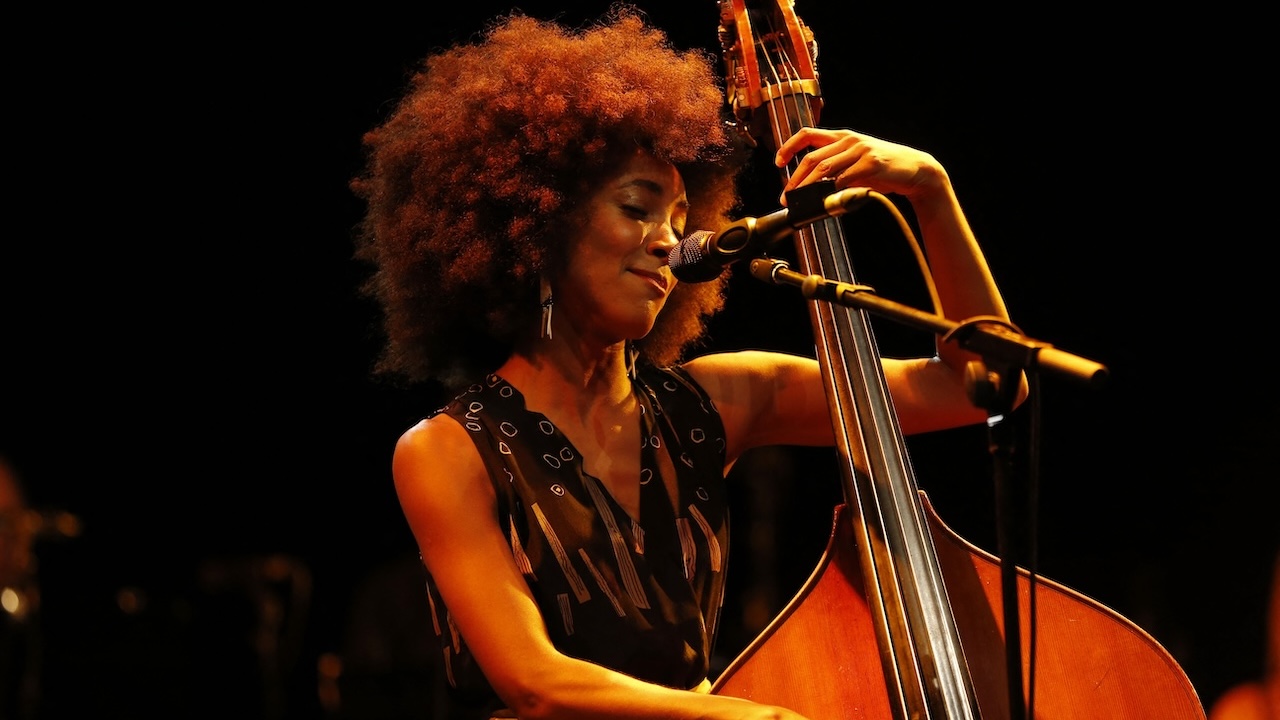“Someone told me you can’t play slap bass on a fretless, but when Prince picked up my bass he slapped the heck out of it!” Esperanza Spalding on jamming with Prince, and her stunning Justin Bieber upset
A support slot with Prince set the stage for Esperanza Spalding’s 2011 Grammy win and a whole new level of recognition

Central to bassist Esperanza Spalding’s bedazzling career has been her flair for the unexpected. Born in Portland, Oregon on October 18, 1984, Spalding, along with her brother, was raised in the working-class King section by her single mom. She credits seeing Yo-Yo Ma perform on Mister Rogers' Neighborhood when she was just four as her initial attraction to music.
A year later she began playing violin, spending the next decade with the Chamber Music Society of Oregon. At age 14, while attending the Northwest Academy performing arts high school on a scholarship, she ventured into a music room and began messing around with an acoustic bass.
She went on to enrol at Portland State University and studied classical music for a year before switching to Boston's Berklee College of Music on a full scholarship. There, she immersed herself in jazz, drawing from such key influences as Wayne Shorter, Dave Holland, and her Berklee teacher, Joe Lovano.
On the performance side, Spalding toured with Patti Austin and Lovano, and released the collaborative trio effort, Junjo, under her own name in 2006. Her critically acclaimed 2008 disc Esperanza topped the Billboard Contemporary Jazz chart, remaining on it for well over a year.
Live appearances for President Obama at the 2009 White House Poetry Jam and Nobel Peace Prize ceremonies, at BET's 2010 Prince Tribute, and in her own 2010 set on Austin City Limits (after which she became the most searched person on Google for the ensuing 24 hours) further raised her profile, as did guest vocal slots with Stanley Clarke, Fourplay, and Mike Stern.
The summer 2010 release of her Billboard Jazz chart-topping third disc, Chamber Music Society, set the stage for her unprecedented 2011 Grammy win for Best New Artist (in the stunning upset of presumed winner Justin Bieber), and a whole new level of recognition.
“I actually met him after the Grammys,” Spalding told Bass Player. “We were both raised by single moms, so we just talked a little bit about that and how our moms are proud of us. It was cool!”
Get The Pick Newsletter
All the latest guitar news, interviews, lessons, reviews, deals and more, direct to your inbox!
We spoke with Spalding in April 2012 following the release of her fourth studio album, Radio Music Society, to get the lowdown on the album's fantastic frequencies.
What was your concept for Radio Music Society, and how does it relate to Chamber Music Society?
“My original concept was to make a double album, one half an intimate chamber approach to interpreting the songs, the other half a jazz ensemble with horns interpreting the songs with elements of improvisation, but formatted for the extroverted medium of radio.
“I quickly saw how much work that would entail, and I also came to realize the material and the corresponding colors couldn't live in the same project, so I split them into two distinct packages.”
Did you make any considerations for the material's accessibility?
“No, that never crosses my mind. What we're doing is using the time-tested tools – the forms, arrangements, and sonic qualities of the instrumentation – to make the songs sound like they could be played on the radio. What I do consider is the value of having these awesome musicians on a record that might have more mainstream appeal.”
What led you to play electric bass for most of the album?
“It was the sound I heard in my head for most of the songs, especially a song like Let Her. I mean, anything is possible on upright, but that song just seemed texturally like it needed electric bass, and it set the tone.
“I’ve been playing the electric for a few years without focusing on it as a primary instrument, so it's new in a way. Part of the premise of this album and band was to have a reason to play and explore the electric.
“On upright I have more comfort and better access to be able to play whatever I might hear in my head, but I want to get to that place on electric bass where I don't have to think about it; if I want to find something I can just go there. Being on the road and playing it every night will go a long way toward that goal.”
Who are the main influences on your electric bass playing?
“The left-hand bass playing of Stevie Wonder and Herbie Hancock has had a big impact. I love Anthony Jackson, Pino Palladino, Willie Weeks, and Derrick Hodge.
“Jaco and Stevie are the two I've transcribed; I haven't yet studied early masters like James Jamerson or Chuck Rainey. There are records I've heard where I don't know who the bassists are, but I've probably absorbed their playing by osmosis.”
Why did you choose to play fretless bass, and what are your thoughts regarding intonation and tone, coming from the acoustic bass?
“In 2008 I was checking out SWR amps, and Fender sent me a fretless Jazz Bass. It sounded real good, and it has been my main electric ever since, so that was the bass I used when I recorded Radio Music Society.
“With regard to intonation, I come from violin, so instrument or neck size has no bearing for me; it's just a matter of modifying to the given space. That's where François Rabbath's upright bass method books have influenced my approach. Rather than mentally trying to play in tune, he feels it's all about your hand learning the distance between specific pitches and knowing how to get there.
“He has exercises where you close your eyes and reach out and repeatedly grab an object in front of you. You're basically training your hand where to go. Then you move the object around and attempt to grab it on the first try. I'll still mess up on my fretless fingerboard, but it feels like familiar territory now.
“When it comes to tone on the fretless, I don't really make the connection from upright. What I do feel – on both acoustic and electric – is that most of my tone ultimately comes from my hands and my touch, much more so than what happens electronically from cable to amp. That's true of any string player.”

Your overall bass concept seems to be tied into singing and playing, where the two voices function in counterpoint to each other.
“Absolutely. You can think of it like a piano player's two hands: they generally move independently, and the combination of the two gives you the sound of the chord changes. Singing and playing allows you to be like a pianist in that you're aware of how the line of your voice and the line of your bass together form a counterpoint that implies the harmony.
“The key to creating a good bassline is to remember what was already played and is still hanging in the air. If I play a B in a G chord and I'm going to a C7 next, then I want to go back to the B and resolve it up to C because that B is still in the listener's ear. You have to control how your line resolves into the next harmonic sound; notes are not separate incidents.
“Great bass players are really in touch with that – knowing what they just outlined and what was left unanswered. They only have a single line, but with it they try to weave through all of the important notes in the progression.”

Do you transfer techniques between acoustic and electric?
“Probably more than I consciously realize. I was rehearsing in an acoustic trio with pianist Gerri Allen and drummer Terri Lyne Carrington, and from playing more electric I'd become very aware of the rhythm of muted strings and ghosted notes – where certain notes are more important than others in a line.
“I had never really thought about doing that on upright, but we were playing a sort of drum-and-bass groove where some notes needed to be long and others needed to be percussive, so I added some left-hand muted open-string plucks.
“On electric, I've just started to get into slapping and popping. Someone told me you can't slap on a fretless, but when we were jamming with Prince he picked up my fretless and slapped the heck out of it!”
The ballad Vague Suspicions has an interesting sonic texture.
“I started that song on bass. I was warming up playing the 4ths you hear in the guitar line, and the melody came to me. Not long afterward, I heard the Charles Mingus recording Blue Tide, and I liked the sound of the vocal and the way the chords are voiced and resolve, so I adapted some of that. I asked Jack DeJohnette to play drums on it, and he really brought it all together.”
What led you to cover Stevie Wonder's I Can't Help It and Wayne Shorter's Endangered Species?
“Gretchen Parlato and I shared some double bills, and hearing her sing I Can't Help It led me to start playing it live. I did it when we opened for Prince with Joe Lovano and Jeff Lee Johnson in the band, and they sounded so good on it I asked them to record it with me; Gretchen is on the track, too.
“Endangered Species comes from one of my favorite records, Wayne Shorter's Atlantis. We would listen and sing along with it in the van, and pianist Leo Genovese said, ‘Why don't we try Endangered Species?’
“We learned our parts on the fly, and the first night was pretty sketchy, but we got better. I asked Wayne if I could put lyrics to it, and he said yes. I wanted to do it a little differently, so Lalah Hathaway sings the soprano sax part and we have a trumpet solo.”
What was Q-Tip's role on Crowned & Kissed and City of Roses?
"He co-produced both tracks; he offered cool suggestions for the bass sound and drum sound on Crowned & Kissed. I had an older recording of it with a jazz kit sound on drums, and he suggested a tighter; more contemporary sound. He played the same role on City of Roses and added vocals and glockenspiel.”
How did you write and record the songs for Radio Music Society?
“Most were written on piano, although a few were written or started on bass. When I write, I often hear two lines, which usually end up being the melody and bassline. Or I might hear a bassline first and it will give me a melody; that's what happened on Radio Song, which I wrote on electric bass.”
Chris Jisi was Contributing Editor, Senior Contributing Editor, and Editor In Chief on Bass Player 1989-2018. He is the author of Brave New Bass, a compilation of interviews with bass players like Marcus Miller, Flea, Will Lee, Tony Levin, Jeff Berlin, Les Claypool and more, and The Fretless Bass, with insight from over 25 masters including Tony Levin, Marcus Miller, Gary Willis, Richard Bona, Jimmy Haslip, and Percy Jones.
"They said, 'We don't have a direction yet, but you got the gig!' I said, 'Well, let me think about it'": Yngwie Malmsteen on why he turned down UFO
“I loved working with David Gilmour… but that was an uneasy collaboration”: Pete Townshend admits he’s not a natural collaborator – even with bandmates and fellow guitar heroes












![[from left] George Harrison with his Gretsch Country Gentleman, Norman Harris of Norman's Rare Guitars holds a gold-top Les Paul, John Fogerty with his legendary 1969 Rickenbacker](https://cdn.mos.cms.futurecdn.net/TuH3nuhn9etqjdn5sy4ntW.jpg)
